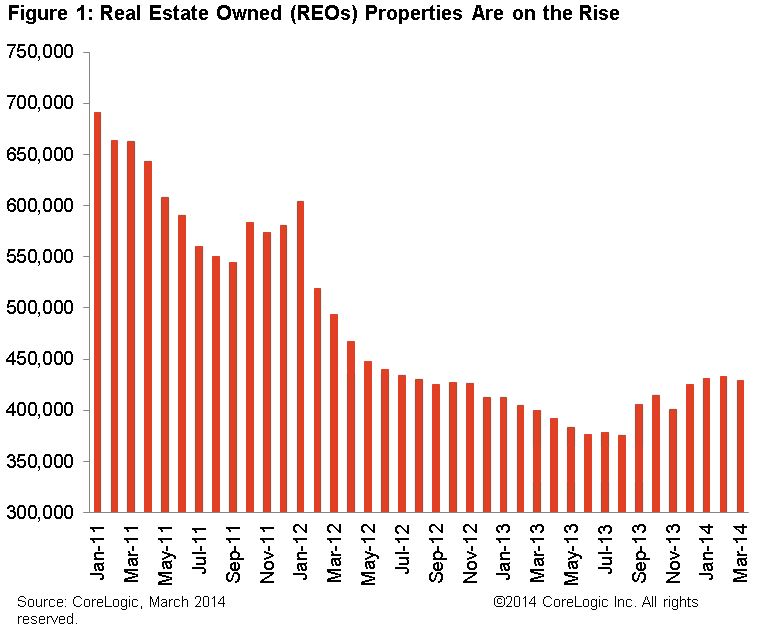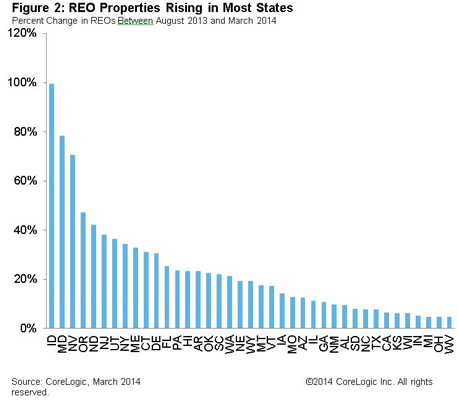Blog

REO Inventories Rising Even as Foreclosures Drop
There are several interrelated factorsrnwhich have led to a recent increase in the number of bank-owned properties (REO)rnnationally. While most measures ofrndistress in the mortgage market, delinquencies, negative equity, foreclosurernfilings, and foreclosure starts, have been improving monthly, the REO inventoryrnhas grown from a post crisis low of 375 properties in August of 2013 to 430,000rnin March of this year, an increase of 15 percent. </p
 </p
</p
An analysis by CoreLogic, presented byrnSam Khater on the company’s Insights</iblog, found that the reversal has been broad based with REO up since lastrnsummer in 46 states. He points to Idahornwhere the number of properties in bank inventories nearly doubled in that timernframe and Maryland which increased by 78 percent followed by Nevada (up 70rnpercent), Oregon (up 47 percent) and North Dakota (up 42 percent). </p
 </p
</p
Khater says that there are severalrninter-related factors behind this increase. The robo-signing that servicers were engagedrnin was discovered in September of 2010 and many banks put an immediaternforeclosure moratorium in place to investigate. rnBy October the number of completed foreclosures which had been risingrnrapidly before the news broke dropped by one third. Even after the moratoria were lifted manyrnservicers proceeded more cautiously in the process and the number of bank-ownedrnproperties did not begin to rise again until late 2011/early 2012 when thernNational Mortgage Settlement provided servicers with more clarity onrnforeclosure standards. </p
Coinciding with the widespreadrnresumption of foreclosures was an increase in demand on the part of investorsrnwhich more than offset the growing inflow of properties. That demand began to drop off in the fall ofrn2013 as rising home prices and mortgage rates made REO investment lessrnattractive. Short sales, which had diverted manyrnproperties out of the foreclosure stream, peaked in early 2013 and began torndecline, a drop that was accelerated at the beginning of this year whenrnCongress failed to reauthorize the Mortgage Forgiveness Debt Relief Act ofrn2007. </p
Khater said that while the level of REOrnproperties is below the peak it reached during the crisis we can assume thatrnthe rapid improvement that led to the trough in the inventory last summer isrnover and the market has entered a new phase as it continues to work through thernlegacy of the housing crisis.
All Content Copyright © 2003 – 2009 Brown House Media, Inc. All Rights Reserved.nReproduction in any form without permission of MortgageNewsDaily.com is prohibited.
Latest Articles
By John Gittelsohn August 24, 2020, 4:00 AM PDT Some of the largest real estate investors are walking away from Read More...
Late-Stage Delinquencies are SurgingAug 21 2020, 11:59AM Like the report from Black Knight earlier today, the second quarter National Delinquency Survey from the Read More...
Published by the Federal Reserve Bank of San FranciscoIt was recently published by the Federal Reserve Bank of San Francisco, which is about as official as you can Read More...

Comments
Leave a Comment